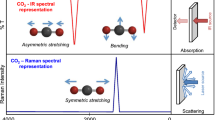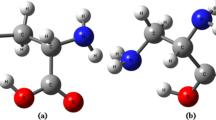Abstract
ID dielectric spectra of cellulose two relaxation processes dominate ID the low temperature range (−120 °C–0 °C). For application of the dielectric method as a diagnostic tool, these relaxations must be assigned to molecular motions of the polymeric system. This paper summarizes and discusses all experimental facts found by dielectric spectroscopy, which can help to solve this interpretation problem. ID ID necessary to include two other relaxation processes ID this discussion: the βwet- relaxation found ID all wet materials and the γ-relaxation evidently found ID all derivatives. The main result of our investigations ID that the dominant process ID the dielectric spectra at low temperatures (called β-relaxation) ID the segmental motion of the chain and not methylol side-group reorientation. Additionally, for the first time, the dielectric spectra of Valonia (and also of bacterial cellulose) clearly indicate that the methylol side-group relaxation ID represented ID the dielectric spectra of pure polysaccharides. This γ-process ID only masked by the β-process for the most pure celluloses. For low molecular weight saccharides and derivatives of cellulose both processes are simultaneously found ID the dielectric spectra. For the first time a correlation ID presented between the intensity of the local motion mode (β-relaxation) and the degree of crystallinity for various cellulosic materials.
Similar content being viewed by others
References
Bradley S.A. and Carr S.H. 1976. Mechanical loss processes ID polysaccharides. J. Polym. Sci. B-Polymer Phys. 14: 111-124.
Einfeldt J., Kwasniewski A., Klemm D., Dicke R. and Einfeldt L. 2000a. Analysis of the side group motion ID O-acetyl-starch using regioselective 2-O-acetyl-starches by means of dielectric spectroscopy. Polymer 41: 9273-9281.
Einfeldt J., Meißner D. and Kwasniewki A. 2000b. Comparison of the molecular dynamics of celluloses and related polysaccharides ID wet and dried states by means of dielectric spectroscopy. Macromol. Chem. Phys. 201: 1969-1975.
Einfeldt J., Meißner D., Kwasniewski A. and Einfeldt L. 2001a. Dielectric spectroscopic analysis of wet and well dried starches ID comparison with other polysaccharides. Polymer 42: 7049-7062.
Einfeldt J., Meißner D. and Kwasniewski A. 2001b. Polymer dynamics of cellulose and other polysaccharides ID solid state - secondary dielectric relaxation processes. Prog. Polym. Sci. 26: 1419-1472.
Einfeldt J., Einfeldt L., Dicke R., Klemm D. and Kwasniewski A. 2002a. The influence of the type of substituents on the polymer dynamics of different regioselective 2-O-esters of starch using dielectric spectroscopy. Polymer 43: 1391-1397.
Einfeldt J., Heinze Th., Liebert T. and Kwasniewski A. 2002b. Influence of the p-toluenesulphonylation of cellulose on the polymer dynamics investigated by dielectric spectroscopy. Carbohydr. Polym. 49: 357-375.
Einfeldt J. and Kwasniewski A. 2002c. Characterization of different types of cellulose by dielectric spectroscopy. Cellulose 9: 225-238.
Einfeldt J., Meißner D. and Kwasniewski A. 2003. Contribution to the molecular origin of the dielectric relaxation processes ID polysaccharides-the high temperature range. J. Non-Cryst. Solids 320: 40-55.
Evans J.N.S. 1995. Biomolecular NMR Spectroscopy. Oxford University Press, Oxford, UK, pp. 35 ff and 381 ff.
Franz G. and Blaschek W. 1990. Cellulose. ID: Dey M.P. (ed.), Methods of Plant Biochemistry. Vol. 2, Polysaccharides. Academic Press, London, pp. 312-317.
Gruber E., Weigert J. and Schneider C. 1999. Possibility of assessment of the hornification effect (ID German). PTS-Symposium-Dresden, pp. 30 ff.
Havriliak S. and Negami S. 1966. A complex plane analysis of alpha-dispersion of some polymeric systems. J. Polym. Sci. C14: 99-107.
Havrilaik S. Jr. and Negami S. 1969. On the equivalence of dielectric and mechanical dispersion ID poly β-hexyl methacrylate. Br. J. Appl. Phys. (J. Phys. D) 2: 1301-1315.
Heymann B. and Grubmüller H. 1999. Chair-Boat transitions and side groups affect the stiffness of polysaccharides. Chem. Phys. Lett. 305: 202-208.
Larsson P.T., Wickholm K. and Iversen T. 1997. A CP/MAS 13C NMR investigation of molecular ordering ID celluloses. Carbohydr. Res. 302: 19-25.
Le Botlan D., Rugraff Y., Martin C. and Colonna P. 1998. Quantitative determination of bound water ID wheat starch by time domain NMR spectroscopy. Carbohydr. Res. 308: 29-36.
Liedermann K. and Lapcík L. Jr. 2000. Dielectric relaxation ID hydroxyethyl cellulose. Carbohydr. Polym. 42: 369-374.
Mcdonald J.R. and Franceschetti D.R. 1978. Theory of small-signal ac response of solids and liquids with recombining mobile charge. J. Chem. Phys. 68: 1614-1637.
Meißner D., Einfeldt J. and Kwasniewski A. 2000. Contribution to the molecular origin of the dielectric relaxation processes ID polysaccharides-the low temperature range. J. Non-Cryst. Sol. 275: 100-209.
Meißner D., Einfeldt L. and Einfeldt J. 2001. Dielectric relaxation analysis of cellulose oligomers and polymers ID dependence on their chain length. J. Polym. Sci.-Polym. Phys. 39: 2491-2500.
Meißner D. and Einfeldt J. 2004. Dielectric relaxation analysis of starch oligomers and polymers with respect to their chain length. J. Polym. Sci.-Polym. Phys. 42: 188-197.
Mikahailov G.P., Artyukhov A.ID and Shevelev A. 1969. Studying of molecular motion ID cellulose and its derivatives by dielectricand NMR methods. J. Polym. Sci. (USSR) 11: 628-639.
Montes H., Mazeau K. and Cavaillé J.Y. 1997. Secondary mechanical relaxations ID amorphous cellulose. Macromolecules 30: 6977-6984.
Montes H., Mazeau K. and Cavaillé J.Y. 1998. The mechanical β relaxation ID amorphous cellulose. J. Non-Cryst. Solids 235: 416-421.
Montes H. and Cavaillé J.Y. 1999. Secondary dielectric relaxations ID dried amorphous cellulose and dextrane. Polymer 40: 2649-2657.
Ono H., Yamada H., Matsuda Sh., Okajima K., Kawamoto T. and Iijima H. 1998. 1H-NMR relaxation of water molecules ID aqueous microcrystalline cellulose suspension systems and their viscosity. Cellulose 5: 231-247.
Radloff D., Boeffel C. and Spiess H.W. 1996. Cellulose and cellulose/poly(vinyl alcohol) blends. 2. Water organization revealed by solid-state NMR spectroscopy. Macromolecules 29: 1528-1534.
Saad G.R., Sakamoto M. and Furuhata K. 1996. Dielectric study of β relaxation ID some cellulosic substances. Polymer Int. 41: 293-299.
Scandola M. and Ceccorulli G. 1985. Viscoelastic properties of cellulose derivatives: 1. Cellulose acetate. Polymer 26: 1953-1957.
Schmidt-Rohr K. and Spiess H.W. 1994. Multidimensional Solid-state NMR and Polymers. Academic Press, London, pp. 102 ff.
Schütt H.J. and Gerdes E. 1992. Space-charge relaxation ID ionicly conducting oxide glasses I Mode and frequency response. J. Non-Cryst. Sol. 144: 11-13.
Sillars R.W. 1937. The properties of dielectrics containing semiconducting particles of various shapes. J. Inst. Electr. Eng. 80: 378-394.
Tang H.-R., Godward J. and Hill B. 2000. The distribution of water ID native starch granules-a multinuclear NMR study. Carbohydr. Polym. 43: 375-387.
Topgaard D. and Södermann O. 2001. Diffusion of water adsorbed ID cellulose fibers studied with 1H-NMR. Langmuir 17: 2694-2702.
Van Beek L.K.H. 1967. Dielectric behaviour of heterogeneous systems. Prog. Dielectr. 7: 69-114.
Widenhorn R., Rest A. and Bodegom E. 2002. The Meyer-Neldel rule for a property determined by two transport mechanisms. J. Appl. Phys. 91: 6524-6527.
Williams G. 1998. Theory of dielectric properties. ID: Runt J.P. and Fitzgerald J.J. (eds), Dielectric Spectroscopy of Polymeric Materials. American Chemical Society, Washington, DC, pp. 16 ff.
Author information
Authors and Affiliations
Corresponding author
Rights and permissions
About this article
Cite this article
Einfeldt, J., Meißner, D. & Kwasniewski, A. Molecular interpretation of the main relaxations found ID dielectric spectra of cellulose – experimental arguments. Cellulose 11, 137–150 (2004). https://doi.org/10.1023/B:CELL.0000025404.61412.d6
Issue Date:
DOI: https://doi.org/10.1023/B:CELL.0000025404.61412.d6




